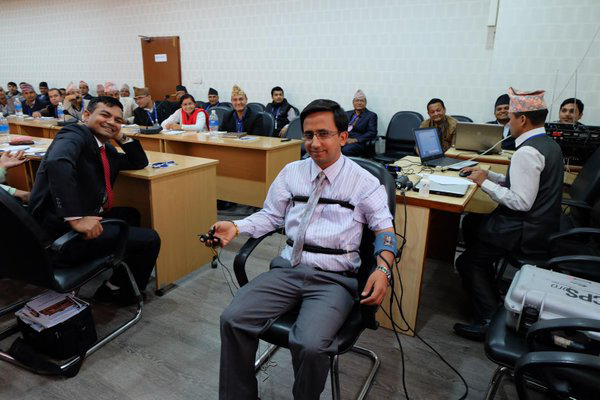Polygraph test on bungling police officials begins
Kathmandu, September 23
A high-level probe panel headed by Additional Inspector General of Police Dhiru Basnyat has started polygraph test on police officials who allegedly bungled the criminal investigation into the rape and murder of Nirmala Panta.
The panel was formed to probe lapses and negligence of all police personnel who were previously assigned to identify and bring to book the culprits. A Nepal Police source said suspended Kanchanpur district police chief SP Dilliraj Bista, DSPs Gyan Bahadur Sethis and Angur GC, inspectors Ekendra Khadka and Jagadish Bhatta, ASI Ramsingh Dhami and 17 others recalled to Kathmandu for investigation were subjected to the lie-detector test.
Nepal Police Headquarters had allowed polygraph test on the implicated cops and analysis of their call detail records for framing Dilip Singh Bista as the perpetrator without any substantial evidence and leading the criminal investigation to nowhere.
The panel will recommend to the headquarters action, including dismissal from service, against the negligent officers as per the gravity of their offence, a source said. Results of the test have not been disclosed.
Constable Chandani Saud who allegedly discarded the salwar of Nirmala and washed it with water in the crime scene also underwent the lie-detector test. Senior Superintendent of Police Shailesh Thapa Kshetri told THT that all suspicious cops might not be required to undergo the polygraph test.
“The panel will conduct polygraph test on cops whose statements do not seem convincing and reasonable to the investigators,” said SSP Kshetri. Polygraph system also called ‘psycho-physiological detection of deception’ is one of the techniques of credibility assessment.
Polygraph technique has been found to be effective in making the suspects speak the truth during crime investigation, according to Nepal Police. Polygraph is used for criminal and internal investigation guided by Nepal Police Polygraph Directive, 2014 to facilitate crime investigations.
The machine records the changes in physiological characteristics, such as respiration, heartbeat and blood pressure. Four to six sensors are attached to a person during a polygraph test. The sensors usually record the person’s breathing rate, pulse, blood pressure, perspiration and sometimes arm and leg movement. A significant change in behaviour such as faster heart rate, higher blood pressure and increased perspiration indicate that the person is lying. However, these test reports cannot be produced in court as evidence.






